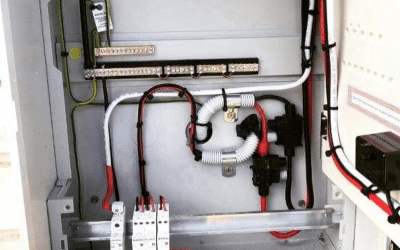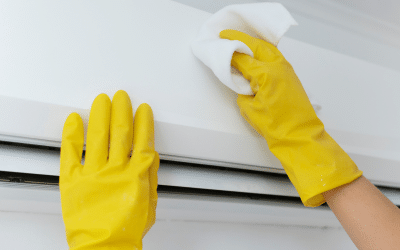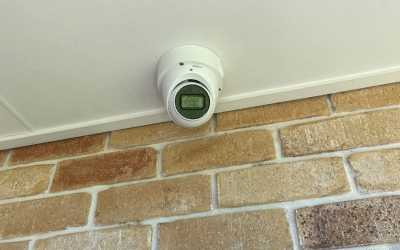Electrical fire safety in homes is a paramount concern, often underestimated in its significance. In Australia, residential electrical fires account for a substantial proportion of fire-related incidents, posing a serious risk to life and property. Recent data from the Australian Fire Authorities indicate that a notable percentage of house fires are directly attributed to electrical faults and mishaps. This alarming statistic underscores the critical need for homeowners to be vigilant and proactive in adopting safety measures to prevent such disasters.
Understanding the causes and implementing preventative strategies can significantly mitigate the risks associated with electrical fires. In this article, we delve into practical and effective methods to safeguard your home, offering peace of mind and enhancing the safety of your living space. By being informed and attentive to electrical safety practices, homeowners can play a crucial role in reducing the incidence of these potentially devastating fires.
Understanding Electrical Fires
Electrical fires in homes are often a result of a complex interplay of factors, each contributing to the escalation of what might start as a minor electrical issue. In Australia, statistics reveal that a significant number of residential fires are caused by electrical problems. For instance, it’s reported that faulty electrical outlets and outdated wiring systems contributed to 40% of house fires according to Fire and Rescue NSW. This data not only highlights the prevalence of electrical fires but also emphasises the need for rigorous electrical maintenance and awareness.
At the core, electrical fires typically originate from an excessive heat build-up due to electrical faults. This can occur when the electrical system is compromised, either through wear and tear, poor installation, or insufficient maintenance. The inherent danger lies in the fact that these fires can ignite without warning, often within the walls of a home, making early detection challenging.
Common Causes of Electrical Fires in Homes
A deeper examination of electrical fires pinpoints several common culprits. Faulty wiring is a predominant factor, especially in older homes where the wiring may not conform to current safety standards. Over time, insulation around wires can deteriorate, increasing the risk of short circuits and overheating.
Overloaded circuits are another major concern. Modern lifestyles demand more electrical gadgets and appliances, which can strain a home’s electrical system. When multiple devices are connected to a single circuit, it can draw more current than the circuit is designed to handle, leading to overheating and potentially igniting a fire.
Improper use of electrical appliances also plays a significant role in the occurrence of electrical fires. This includes using appliances beyond their intended capacity, not adhering to safety guidelines, or using damaged or malfunctioning electrical equipment. Additionally, the misuse of extension cords, such as overloading them or running them under carpets where heat cannot dissipate, further escalates the risk.
Understanding these common causes is the first step towards prevention. It allows homeowners to identify potential hazards in their homes and take necessary actions to rectify these issues, thereby significantly reducing the risk of electrical fires.
Proactive Safety Measures
Adopting proactive safety measures is a key strategy in preventing electrical fires in the home. Homeowners can significantly reduce the risk of such incidents by taking deliberate steps to ensure that their electrical systems and appliances are functioning safely and efficiently. This section outlines essential preventative actions that can be taken to safeguard against electrical fires.
Installation and Maintenance of Electrical Appliances
The proper installation and regular maintenance of electrical appliances are critical in preventing electrical fires. Firstly, it’s crucial to ensure that all electrical appliances are installed according to the manufacturer’s guidelines and Australian electrical safety standards. This often involves professional installation, especially for high-powered appliances like air conditioners or large kitchen appliances.
Regular maintenance is equally important. Homeowners should schedule routine checks of their electrical appliances, looking for any signs of wear, damage, or malfunction. This includes inspecting cords for fraying, checking for loose or faulty plugs, and listening for unusual sounds from appliances, which might indicate internal issues.
Engaging a professional electrician for periodic inspections of the home’s electrical system is highly recommended. Qualified electricians can identify potential hazards that may not be apparent to the untrained eye, such as outdated wiring, improperly grounded outlets, or overloaded circuits. They can also provide expert advice on electrical safety and make necessary upgrades or repairs to ensure the home’s electrical system adheres to the latest safety standards.
Safe Use of Electrical Outlets and Cords
Homeowners must also be vigilant in the safe use and maintenance of electrical outlets and cords. This involves not overloading power outlets with multiple adaptors or extension leads, which can lead to overheating and electrical fires. It’s essential to distribute high-energy appliances across different circuits to prevent overload.
Regularly checking and maintaining electrical cords is another key preventive measure. Cords should not be run under carpets or rugs, as this can cause overheating and conceal any damage to the cord. Additionally, cords should be kept away from water and high-traffic areas to prevent damage.
Being aware of the warning signs of potential electrical hazards can also help in early detection and prevention. These signs include frequent tripping of circuit breakers, a tingling sensation when touching an appliance, discoloured or warm wall outlets, and a persistent burning smell without an identifiable source. If any of these signs are observed, it’s critical to immediately consult a professional electrician to investigate and address the issue.
By following these guidelines, homeowners can play an active role in ensuring their home’s electrical system is safe, significantly reducing the risk of electrical fires.
The Role of Smoke Detectors and Fire Extinguishers
In the realm of home safety, the importance of smoke detectors and fire extinguishers cannot be overstated, particularly in the context of preventing and managing electrical fires. These devices serve as critical lines of defence, often being the difference between a minor incident and a catastrophic event.
Smoke detectors play a pivotal role in early fire detection, which is essential for the safety of a home’s inhabitants. They provide an immediate alert, giving occupants precious time to evacuate and call emergency services. In Australia, it’s a legal requirement in most states and territories that homes are fitted with smoke detectors. These devices should be installed on every level of the home, especially near bedrooms and living areas, to ensure maximum coverage. It’s crucial to test smoke detectors regularly, at least once a month, and replace the batteries annually or as recommended by the manufacturer. Smoke detectors themselves should be replaced every 10 years to ensure they remain effective.
When it comes to dealing with electrical fires, the selection and maintenance of fire extinguishers is another critical aspect. Not all fire extinguishers are suitable for electrical fires; therefore, it’s important to have an extinguisher that is specifically rated for electrical fires (Class E in Australia). These extinguishers typically use a dry chemical powder that can effectively extinguish fires involving electrical equipment without conducting electricity, thereby reducing the risk of electric shock.
Homeowners should ensure that they have at least one fire extinguisher in an easily accessible location, ideally near the kitchen or any area with a higher risk of electrical fires. It’s also important to familiarise themselves with the operation of the extinguisher, as this knowledge can be crucial in an emergency situation. Regular maintenance of fire extinguishers, including checking for any signs of damage or corrosion and ensuring the pressure gauge is within the recommended range, is vital to ensure they will function effectively when needed.
In conclusion, smoke detectors and appropriately selected and maintained fire extinguishers are indispensable in a comprehensive approach to electrical fire safety in the home. They not only provide a means of early detection and initial fire fighting but also contribute significantly to the overall safety and preparedness of the household.
Regular Electrical Inspections
The necessity of regular electrical inspections in homes cannot be emphasised enough. These inspections, conducted by professional electricians, play a pivotal role in identifying and mitigating potential fire hazards, thus ensuring the safety and integrity of a home’s electrical system. Periodic inspections are essential, not just for compliance with safety regulations but also for the peace of mind they bring to homeowners.
These inspections typically involve a thorough evaluation of the entire electrical system, including wiring, outlets, fuse boxes, and appliances. Electricians look for signs of wear and tear, outdated components, faulty wiring, and any other issues that could pose a fire risk. By identifying such problems early, they can be rectified before they escalate into serious hazards. Regular inspections also ensure that the electrical system is up to date with current safety standards, a crucial aspect in older homes where wiring may not have been updated for several years.
Hiring Qualified Electricians
When it comes to hiring an electrician for home inspections, selecting the right professional is crucial. In Australia, homeowners should look for electricians who are fully licensed and accredited. This ensures that they have the necessary training, skills, and understanding of local regulations to conduct thorough and reliable inspections.
Experience is another important criterion. An electrician with a solid track record and extensive experience is more likely to identify potential issues that less experienced professionals might miss. Homeowners can seek recommendations from friends, check online reviews, or consult professional associations to find a reputable electrician.
Additionally, homeowners should verify that the electrician has the appropriate insurance, including liability insurance, which protects in the event of an accident or damage during the inspection. It’s also advisable to choose an electrician who is up to date with the latest electrical standards and technologies, as this knowledge is critical in identifying potential risks and recommending modern, safer alternatives.
In summary, regular electrical inspections are a crucial aspect of maintaining a safe home environment. These inspections should be carried out by qualified, experienced, and fully insured electricians. By doing so, homeowners can significantly reduce the risk of electrical fires and ensure their electrical systems are compliant with the latest safety standards.
Educating Household Members
Basic Principles of Electrical Safety
Initiate the education process by discussing the basic principles of electrical safety with all household members. This should cover the safe usage of electrical appliances, the hazards of overloading power outlets, and recognising warning signs like flickering lights or unusual smells from outlets. Everyone must understand these fundamentals to prevent mishaps.
Proper Handling of Electrical Appliances
Educate household members on the importance of proper handling of electrical appliances. This includes habits like unplugging appliances when not in use, especially those prone to overheating, and ensuring cords are kept away from water and are intact, without any signs of damage or fraying.
Regular Family Discussions on Electrical Safety
Hold regular family discussions to reinforce electrical safety practices. Topics can range from the dangers of inserting foreign objects into outlets to the safe use of extension cords and emergency protocols. Tailor these conversations to be age-appropriate, especially for children, to build their understanding and respect for electrical safety from a young age.
Displaying a List of Electrical Safety Rules
Create and prominently display a list of electrical safety rules in the home. This visual reminder should include key points such as turning off appliances after use, reporting electrical issues immediately, and avoiding DIY electrical repairs.
Involving the Family in Home Safety Audits
Engage the entire family in regular safety audits around the home. Check for potential hazards like overloaded outlets, ensure smoke detectors are functional, and verify that fire extinguishers are easily accessible and in working order. These audits not only educate but also involve family members in maintaining a safe living environment.
By focusing on these key areas, homeowners can foster a culture of electrical safety awareness in their household, significantly reducing the risk of electrical accidents and ensuring the safety of all occupants.
DIY Electrical Work: Risks and Limitations
Engaging in DIY electrical work carries significant risks and limitations, especially given the complex and potentially hazardous nature of electrical systems. Homeowners should be acutely aware of the dangers associated with attempting DIY electrical repairs and the stringent legal restrictions in place in Australia to safeguard individuals and properties.
One of the primary risks of DIY electrical work is the potential for electric shock, which can result in serious injury or even death. Without proper training and equipment, even seemingly minor electrical tasks can lead to accidents. Additionally, incorrect or inadequate repairs can pose a substantial fire risk, as improper wiring or connections may lead to overheating and electrical fires.
Another critical aspect is the legal restrictions in Australia regarding electrical work. The law mandates that most electrical tasks must be carried out by a licensed electrician. This is not just a recommendation but a legal requirement intended to ensure safety and compliance with strict Australian Standards. Performing electrical work without the necessary qualifications and licenses is not only dangerous but also illegal, and it can lead to significant penalties and invalidate home insurance policies.
Moreover, DIY electrical work can have long-term safety implications. Faulty electrical installations might not present immediate issues but can create hidden dangers that manifest over time, increasing the risk of electrical fires or system failures. This is particularly concerning in older homes where the electrical system might already be under strain from age and wear.
In light of these risks and legal constraints, homeowners are strongly advised to avoid DIY electrical repairs. Instead, hiring a qualified, experienced electrician is the safest and most legally compliant approach to handling any electrical issues in the home. By doing so, homeowners ensure that electrical work is performed safely, correctly, and in line with Australian regulations, thus protecting their property and the well-being of all occupants.
Technology and Electrical Fire Safety
The landscape of electrical fire safety has been significantly transformed by advances in technology. Innovative developments are continuously contributing to the prevention of electrical fires, enhancing safety in homes in remarkable ways. Smart home devices, in particular, have emerged as a game-changer in this domain.
One of the key technological advancements is the integration of smart home systems, which can significantly enhance electrical fire safety. These systems include smart smoke detectors that offer more advanced features than traditional models. For instance, they can send alerts to your smartphone if smoke is detected, even when you’re not at home, allowing for a quicker response. Additionally, they can be interconnected, ensuring that if one detector goes off, all detectors in the house are activated, providing a comprehensive alert system.
Smart plugs and circuit breakers are another innovation contributing to fire safety. These devices can be remotely monitored and controlled via a smartphone app. They provide the ability to switch off power sources in case of an anomaly, reducing the risk of electrical fires. This is particularly useful for appliances that are prone to overheating or are left on accidentally.
Furthermore, advancements in electrical panel technology, such as Arc Fault Circuit Interrupters (AFCIs), have been instrumental in preventing fires. AFCIs are designed to detect a wide range of electrical arcing faults, which are a common cause of electrical fires, and to shut down the circuit before it overheats to the point of igniting a fire.
Another notable advancement is the use of thermal imaging technology. This can be used during electrical inspections to detect hot spots within walls or electrical panels that are invisible to the naked eye. Identifying and addressing these hot spots can prevent potential fires.
In addition, home automation systems are increasingly being integrated with fire detection and prevention technologies. These systems can automatically cut power to certain areas of a house if a fire risk is detected, or even alert the local fire department in case of an emergency.
In conclusion, the integration of smart technology into home electrical systems represents a significant leap forward in fire prevention and safety. By leveraging these technological advances, homeowners can enhance their ability to detect and prevent electrical fires, thereby ensuring greater safety and peace of mind.
Developing an Emergency Response Plan
Creating an effective emergency response plan for electrical fire emergencies is essential for ensuring safety and preparedness in your home. Here are key steps to follow:
- Identify All Exits: List all possible exits from your home, including doors and windows, and ensure they are always accessible and free from obstructions.
- Designate a Safe Meeting Point: Choose a safe, external meeting point where all household members can convene after evacuating. This spot should be at a safe distance from the house.
- Incorporate Smoke Detectors and Fire Extinguishers: Include the locations of smoke detectors and fire extinguishers in your plan. Ensure everyone knows how to use them but emphasise the priority of safe evacuation.
- Emergency Services Contact Information: Make sure all household members, including children, know how to contact emergency services and what information to provide.
- Conduct Regular Fire Safety Drills: Practice different emergency scenarios to familiarise everyone with the emergency response plan. This helps reduce panic and confusion during actual emergencies.
- Review and Update Your Plan: Regularly revise your plan to accommodate any changes in your home layout or family composition.
By following these steps, you can develop a comprehensive emergency response plan that will prepare all household members to act quickly and safely in the event of an electrical fire.
Government and Community Resources
In Australia, both the government and various community organisations offer a wealth of resources and initiatives aimed at promoting fire safety awareness. These resources play a crucial role in educating the public, providing up-to-date information, and supporting communities in their efforts to prevent electrical fires.
- Australian Government Resources:
- Fire Safety Information: The Australian government provides extensive online resources regarding fire safety in homes. This includes guidelines on electrical safety, the installation of smoke alarms, and the safe use of electrical appliances.
- Building Codes and Standards: Information on building codes and electrical standards, which are vital for ensuring new constructions and renovations meet safety requirements, is readily available from government websites.
- Public Safety Campaigns: Regular public safety campaigns are conducted, often through local fire departments, providing valuable information and tips on preventing electrical fires.
- Community Programs:
- Fire Safety Workshops: Many communities host workshops and seminars on fire safety, often in collaboration with local fire departments. These workshops provide practical advice on fire prevention, the use of fire extinguishers, and emergency planning.
- School-Based Initiatives: Schools often participate in fire safety programs, teaching children about the dangers of fires and basic prevention techniques. These initiatives can include visits from firefighters, educational materials, and fire drills.
- Community Safety Audits: Some communities offer safety audits for residents, helping them identify and rectify potential fire hazards in their homes.
- Volunteer Fire Services:
- Many regions in Australia have volunteer fire services that play an integral role in raising awareness about fire safety. They offer programs, training, and information sessions tailored to local community needs.
- Online Resources and Social Media:
- Government and community groups frequently use online platforms and social media to disseminate fire safety information, updates on fire safety technology, and reminders about routine safety checks.
- Collaborations with Electrical Companies:
- Collaborative efforts between the government, community groups, and electrical companies often result in informative campaigns and initiatives, such as distributing safety brochures and organising community events focused on electrical safety.
- Accessing and utilising these resources can significantly enhance individual and community awareness and preparedness regarding electrical fire safety. These combined efforts help in building a safety-conscious culture, ensuring that communities are better equipped to prevent and respond to fire emergencies.
Insurance and Electrical Fires
Understanding the intricacies of insurance coverage concerning electrical fire damage is a crucial aspect of responsible homeownership. In Australia, navigating the specifics of home insurance policies and ensuring adequate coverage can provide essential financial protection in the unfortunate event of an electrical fire.
- Scope of Insurance Coverage:
- Typically, home insurance policies cover damage caused by electrical fires. However, the extent of coverage can vary significantly between policies. It’s important to carefully review what is included, such as structural damage, replacement of personal belongings, and temporary living expenses if the home is uninhabitable.
- Exclusions and Limitations:
- Policies may have exclusions or limitations. For instance, damage due to negligence or failure to comply with safety standards might not be covered. It’s essential to understand these details to ensure full protection.
- Compliance with Safety Regulations:
- Insurance providers often require that homes comply with current electrical safety standards. Regular electrical inspections and upgrades, if necessary, can be crucial in maintaining insurance validity.
- Reviewing and Updating Policies:
- It’s advisable to periodically review and update your insurance policy. This is particularly important after making significant changes or upgrades to your home, which could affect the value of your property and the amount of coverage needed.
- Understanding Policy Terms:
- Familiarise yourself with the specific terms of your policy, such as deductibles, policy limits, and the claims process. This knowledge is vital for making informed decisions in case of a fire.
- Documenting Valuables and Upgrades:
- Keep an updated inventory of valuable items and any upgrades made to your home. This documentation can be invaluable when filing a claim after an electrical fire.
- Professional Advice:
- Consider consulting with an insurance professional to ensure your policy meets your needs and to clarify any uncertainties. This can provide peace of mind that your home and possessions are adequately protected.
In essence, understanding and maintaining an appropriate home insurance policy with electrical fires is not just a matter of financial protection; it’s a critical component of comprehensive home safety planning. Ensuring that your policy is up-to-date and in line with your home’s current value and condition can significantly mitigate the financial impact in the event of an electrical fire.
Sustainable Practices and Electrical Safety
Incorporating sustainable practices into home management not only contributes to environmental conservation but also enhances electrical safety. The adoption of eco-friendly appliances and energy-efficient systems plays a significant role in reducing the risks associated with electrical fires.
- Energy-Efficient Appliances:
- Modern, energy-efficient appliances are designed with safety in mind. They often come with advanced safety features and are less likely to overheat, a common cause of electrical fires. By replacing older, less efficient appliances with these newer models, homeowners can reduce the risk of fire while also lowering energy consumption.
- LED Lighting:
- Switching to LED lighting is another sustainable practice that enhances electrical safety. LEDs generate significantly less heat compared to traditional incandescent bulbs, reducing the risk of overheating and potential fire hazards.
- Smart Home Systems:
- Smart home technology, such as automated lighting and energy management systems, not only conserves energy but also provides monitoring capabilities. These systems can detect and alert homeowners to unusual electrical activity, potentially preventing fire incidents.
- Regular Maintenance of Solar Panels:
- For homes equipped with solar panels, regular maintenance is key to ensuring safety and efficiency. Properly maintained solar systems are less likely to develop electrical faults that could lead to fires.
- Use of Surge Protectors:
- Surge protectors are an essential aspect of electrical safety, especially for homes utilising multiple high-energy devices. They protect against electrical surges that can cause overheating and fires, while also conserving energy.
- Eco-Friendly Building Materials:
- Using eco-friendly and fire-resistant building materials during construction or renovation can further enhance electrical safety. Materials like flame-retardant roofing and non-combustible insulation add an extra layer of protection against fires.
- Energy Audits:
- Conducting regular energy audits can identify areas where energy is being wasted and potential safety risks. This allows homeowners to make informed decisions about upgrades and improvements, enhancing both sustainability and safety.
In summary, the integration of sustainable practices and eco-friendly appliances in homes is not just beneficial for the environment but also crucial for enhancing electrical safety. These practices help in minimising the risk of electrical fires, contributing to a safer, more energy-efficient home.
Key Takeaways
This comprehensive guide on preventing electrical fires in homes has underscored several crucial points:
- Proactive Safety Measures: The importance of implementing proactive safety measures, such as proper installation and regular maintenance of electrical appliances, cannot be overstated. It’s essential to ensure the safe use of electrical outlets and cords and to be aware of the warning signs of potential electrical hazards.
- Smoke Detectors and Fire Extinguishers: Installing and maintaining smoke detectors and selecting the appropriate fire extinguishers for electrical fires are key to early detection and management of fires.
- Regular Electrical Inspections: Periodic inspections by professional electricians are necessary to identify and mitigate potential fire hazards, ensuring that the home’s electrical system is safe and up to standard.
- Educating Household Members: Continuous education of all household members on electrical safety is crucial in creating a safety-conscious home environment.
- Awareness of DIY Risks: Understanding the risks associated with DIY electrical work and the legal limitations in Australia is vital for homeowners.
- Leveraging Technology: Utilising advances in technology, such as smart home devices, can significantly contribute to electrical fire prevention.
- Emergency Preparedness: Developing and practising an effective emergency response plan for electrical fire emergencies is essential for ensuring safety and preparedness.
- Utilising Resources: Taking advantage of government and community resources for fire safety awareness can enhance individual and community preparedness.
- Insurance Awareness: Understanding and maintaining appropriate insurance coverage for electrical fires is a crucial aspect of financial protection.
- Sustainable Practices: Adopting sustainable practices and eco-friendly appliances can contribute significantly to electrical safety.
Conclusion
The responsibility of preventing electrical fires in homes lies primarily with the homeowners. It is imperative to adopt a proactive approach towards safety, which includes regular inspections, continuous education on electrical safety, and implementing preventive measures. Embracing technological advancements and sustainable practices can further augment these efforts. By being vigilant and informed, homeowners can ensure a safer living environment, effectively reducing the risk of electrical fires. This guide serves as a reminder of the importance of these responsibilities and the impact they have in maintaining a secure and fire-safe home.
FAQ’s:
1. What are the common causes of electrical fires in Australian homes?
Common causes include faulty wiring, especially in older homes, overloaded circuits due to high appliance usage, and improper use of electrical appliances. Regular inspections and adherence to safety practices can mitigate these risks.
2. How can I protect my home against fire caused by electrical equipment?
Protect your home by using appliances as per manufacturer guidelines, avoiding the use of damaged or malfunctioning electrical equipment, and ensuring proper installation and maintenance. It’s also advisable to use surge protectors and regularly inspect for any electrical hazards.
3. How often should electrical systems be inspected in homes?
It’s recommended to have a professional electrician inspect your home’s electrical system at least once every few years, or as suggested by a professional, to identify and rectify potential hazards.
4. What should I do if I notice warning signs of electrical problems?
If you observe signs like frequent circuit breaker trips, tingling sensation when touching appliances, discoloured outlets, or a burning smell, contact a licensed electrician immediately to assess and fix the issue.
5. Is DIY electrical work safe for homeowners?
DIY electrical work is not recommended due to the risks of electric shock and fire, and legal restrictions in Australia. Always hire a licensed electrician for any electrical work in your home.







